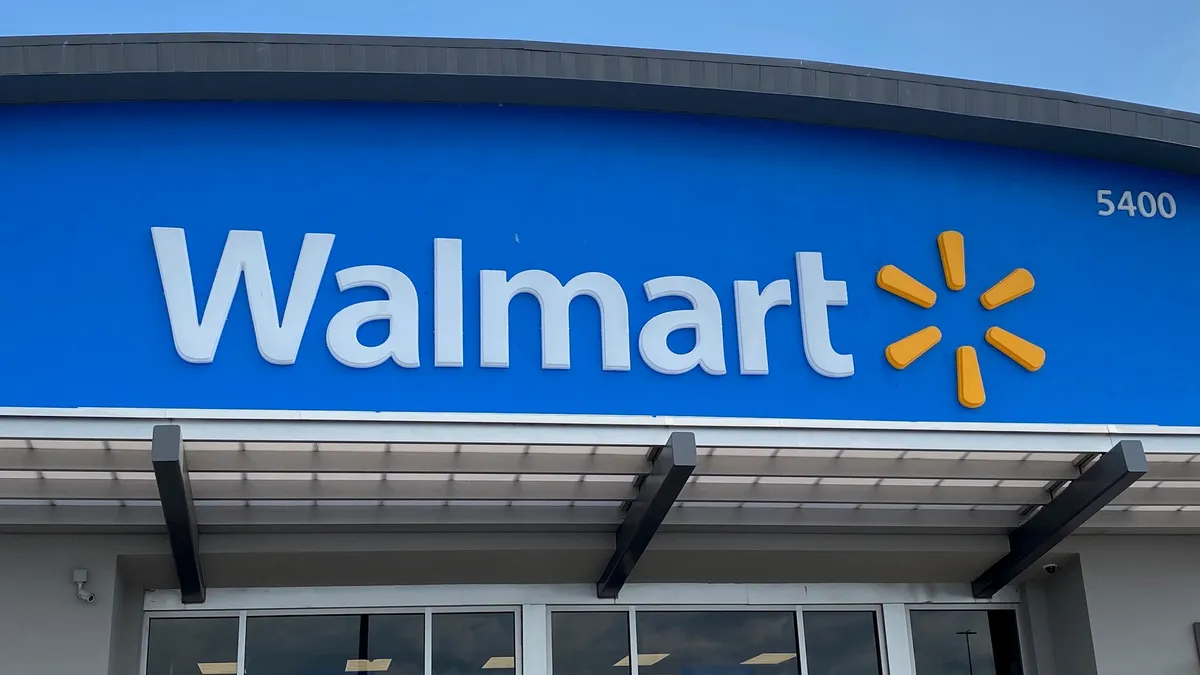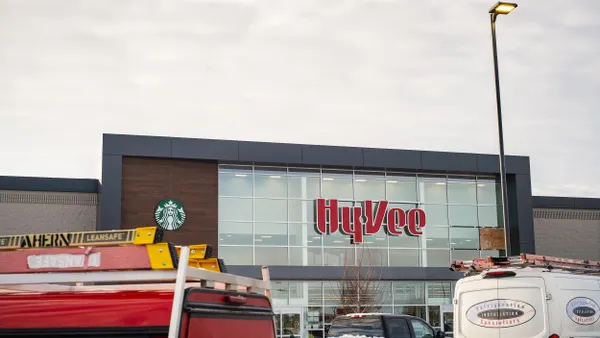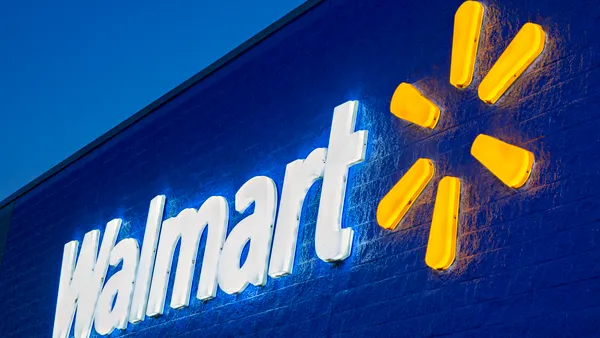Dive Brief:
- Walmart recently discontinued a test of a machine that verified purchases people made using the retailer’s scan-and-go checkout solution at one of its stores in Bentonville, Arkansas, a spokesperson for the retailer said.
- The machine, which the retailer was piloting since at least November, used Radio-Frequency Identification (RFID) tech to verify what customers purchased.
- The pilot marks the latest checkout innovation tested by the retailer as companies look to reduce shrink at their front ends.
Dive Insight:
During the pilot, customers who used the retailer’s scan-and-go checkout solution could have their carts scanned by the machine, which used RFID to verify people had purchased the items in their carts, the Walmart spokesperson said.
A blue marker appeared on the floor by the machine and signage directed customers to “Place your cart on the square.” The machine also had a bagging area next to it. Other signage by the machine encouraged customers to “Try our new, faster checkout.”
The appearance of the machine suggested it was a new type of self-checkout system. A news site for the kiosk industry even noted in a post last year that the machine was a new form of self-checkout, when in fact it is a receipt verification system for scan-and-go.
The Walmart spokesperson did not comment on why the pilot of the automated receipt check machine ended in late January but noted that the retailer will use its findings from the test as it continues to try out more innovations.
The pilot occurred at the Walmart Neighborhood Market at 205 N. Main St. in Bentonville, the spokesperson confirmed. Scott Benedict, an affiliate partner at McMillanDoolittle and former Walmart and Sam’s Club associate, said in early January that the machine had been at the store for a couple of months.
Although the test run of the new technology has ended, it underscores the emphasis retailers are placing on securing self-service checkout options like scan-and-go and self checkout. It’s also notable for its use of RFID technology, which has been around for decades yet is now gaining more traction at retailers like Walmart and Uniqlo.
Walmart has been using RFID technology, which uses radio frequencies to track objects, since at least the 2000s. In 2022, the retailer announced that it was expanding its use of the technology beyond retail apparel to other departments such as home, entertainment and hardline department, mandating suppliers implement RFID tags by September of that year.
During an earnings call in February, CFO John David Rainey noted that RFID is among the technologies the retailer is leveraging to “drive speed and proficiency.”
Retailers have increasingly adopted RFID tech at a time when loss prevention and inventory management have become top-of-mind issues for the retail sector.
“RFID is a fantastic technology for being able to quickly identify products down to the individual item. This can be used to automatically check consumers out or for the purposes of inventory checking. It basically saves a lot of manual work in either checking people out or doing stock takes,” GlobalData Managing Director Neil Saunders said in emailed comments.
However, while RFID is currently used in retail, it is more challenging to implement in a low margin and high volume category like food due to supplier compliance and high costs associated with having an RFID label for each individual item, Saunders said.
“There is no doubt that the use of RFID is growing, but it will likely be quite some time before a grocery store has an RFID register like those found at Uniqlo,” Saunders said.
Saunders noted that RFID technology for self checkouts at Uniqlo and Zara not only “are very popular with customers and work extremely well” but also allow monitoring for retail theft.
Benedict said that the cost per tag for RFID technology has come down “significantly” in recent years, but is still expensive.
“For it to become very efficient, it's got to be put on that manufacturing process and not a manual process either after it gets to the store or somewhere in the supply chain,” Benedict said.
Other recent innovations around streamlining shopping and checkout by Walmart include exit scanners that use AI and cameras at Sam’s Club stores, digital cake ordering at Sam’s Club locations and an AI-powered replenishment algorithm for the Walmart InHome delivery service.












